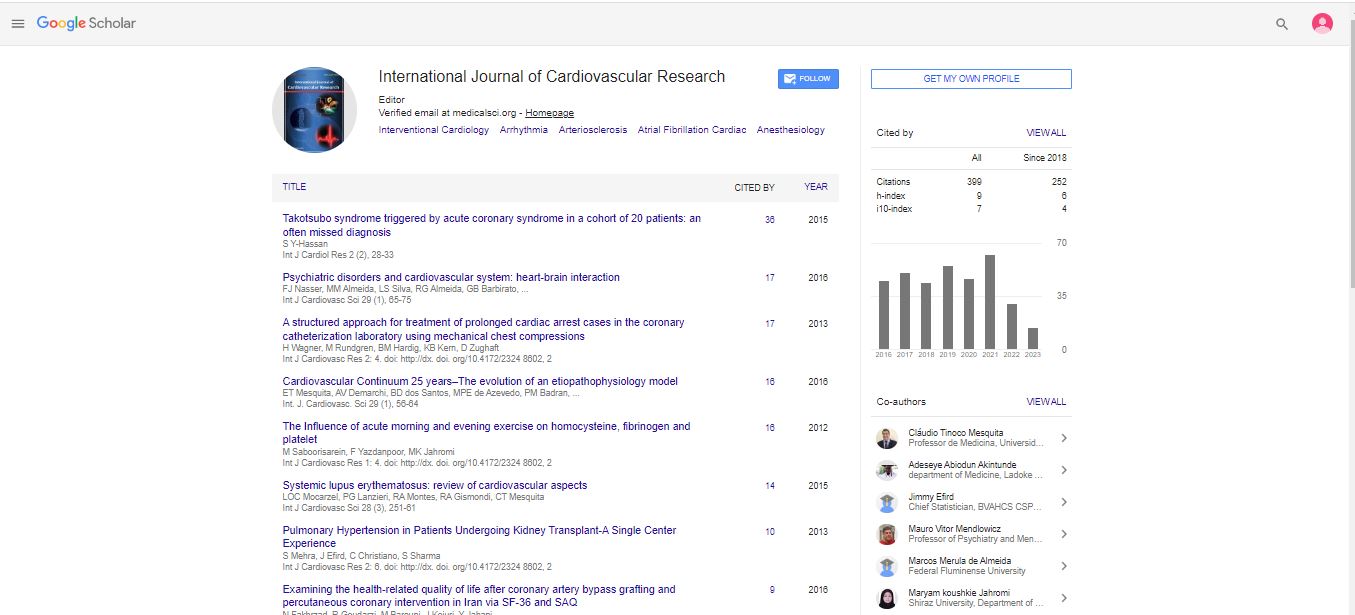Geomagnetic fields produce trophic effects in myocardium
Luis Martínez Millan, J L Zugaza and D Sanchez Quintana
Achucarro Basque Center for Neuroscience, Spain
: Int J Cardiovas Res
Abstract
Changes of 100 degrees in the orientation of the horizontal vector of a geomagnetic field produced by three pairs of Helmholtz coils cause unanticipated alterations in the brain as well as the heart. In the rodent brain, it leads to significant c-fos expression in cortical and subcortical brain structures. This expression requires neurotransmitter secretion and is mediated by the MAP kinases pathway. In the heart, autonomous and cholinergic cardiac innervations are responsible for a permanent electrical activity that makes the myocardium a receptor for magnetic fields actions. Mice submitted to the same aforementioned modified geomagnetic fields for one hour every eight hours during a period of 10 days caused a cardiac hypertrophy. This was mainly due to a considerable increase of myocardic blood vessels distributed in both ventricles, as well as, in the intermediate and deep myocardic strata. Moreover, significant increase of c-fos expression was detected in treated cases in comparison with controls. Vascular-epithelial growth factor participates in the higher density of vessels. Although these preliminary results have to be completed by studying time course, persistency and appearance after experimental myocardial infarction, it suggests the potential towards alternative clinical therapies and a translational value. The added benefit is that the magnetic apparatus is inexpensive and the envisaged application to human patients would be non-invasive. Recent Publications 1. García Del Caño G, Gerrikagoitia I, Alonso-Cabria A and Martínez-Millán L (2006) Organization and origin of the connection from the inferior to the superior colliculi in the rat. J Comp Neurol. 499(5):716 - 731. 2. Gerrikagoitia I and Martínez-Millán L (2009) Guanosine-induced synaptogenesis in the adult brain in-vivo (2009) The Anatomical Record 292(12):968-1975.
Biography
Luis Martínez Millán completed his PhD in Medicine and specialized in Pediatrics. Since 1992, he is full Professor in Human Anatomy and Embryology. His research is centered on development and plasticity of sensory systems, documenting the reorganization of sensory afferents after removal of visual inputs in young animals and enhancing the plastic possibilities after lesions in adult systems. In the last years, he observed changes of gene expression in encephalic neurons under the influence of modified geomagnetic fields. And very recently, he detected changes in blood vessels density and distribution in experimental animals submitted to modify geomagnetic fields. Presently, he is Professor at Achucarro Basque Center for Neuroscience, Spain.
 Spanish
Spanish  Chinese
Chinese  Russian
Russian  German
German  French
French  Japanese
Japanese  Portuguese
Portuguese  Hindi
Hindi 



